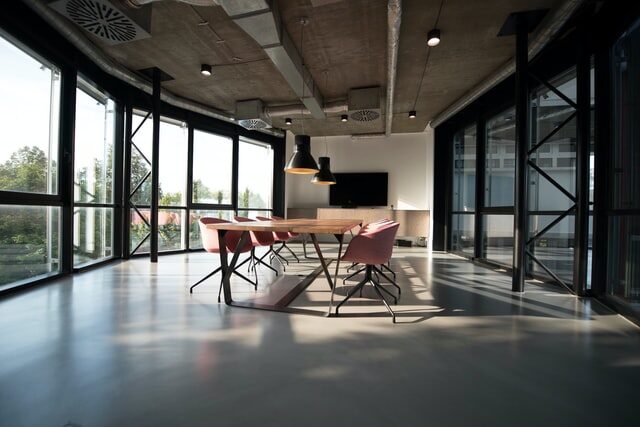When purchasing office furniture, you should consider the following criteria: multi-functionality, ergonomics, sustainability, cost, style, and comfort. If you are unsure what each of these factors means, read on. Consider these six factors if your office furniture Indiana is not functional before purchasing. Each of these factors contributes to the daily tasks of an office. Read on to understand how each of them can help your business.
Multi-functionality
Today, organizations have many reasons to invest in multi-functional office furniture. Not only does this type of furniture save space, but it also improves productivity. Several drivers contribute to improved company performance, including increased teamwork. In addition to reducing the overall costs of workspaces, multi-functional furniture is more adaptable than ever.
Whether you need a desk, conference table, or a chair for lunch, multi-functional office furniture will fit the bill. The most versatile type of desk can double as a desk and coffee table or even a mini-fridge. The multi-function quality will give your office a great look, while the ability to move around easily is a major plus. In addition, this type of furniture is ideal for small offices to save you money in the long run.
Comfort
If you want your employees to feel comfortable in their workstations, you should ensure that the furniture you buy is ergonomically correct. Ergonomic office furniture is designed to the needs of the employee. It promotes proper posture and prevents physical stress. As a result, ergonomic office furniture helps employees focus for longer periods, improving their efficiency and productivity.
Good quality furniture will increase the morale of your employees. Employees like a well-arranged and clean office. Comfortable furniture will make them more productive and happier. In addition, quality office furniture will make them easy to move around the office. It means that you’ll save money in the long run. Aside from saving you money, good-quality furniture can be easily moved around and customized to accommodate different working styles.
Ergonomics
Ergonomics of office furniture is the practice of creating furniture for human comfort and efficiency in the workplace. Ergonomic furniture includes comfortable chairs, ergonomic desks, and other equipment. Modern workplaces are more mobile than ever, which means that workers’ bodies are becoming more susceptible to many types of musculoskeletal disorders. Therefore, employers are responsible for choosing the right furniture to support employees’ bodies and improve their productivity.
Whether it is an employee or a customer, ergonomic office furniture can have a profound effect on employee health and productivity. Most office workers spend 9 hours in their reserved work chair, which is why selecting an ergonomic chair is so important. Ergonomic chairs support a user’s posture and promote health. By using ergonomic furniture, employees can work more comfortably, leading to higher productivity. It can also appeal to visitors to a company, increasing employee morale.
Sustainability
There are several factors to consider when selecting environmentally friendly office furniture. It is important to choose long-lasting pieces that are comfortable for staff members. Furniture’s sustainability depends on its materials and design. For instance, PVC or extruded aluminum furniture may contain harmful chemicals and may not meet the recycling content requirements. The best way to choose environmentally friendly office furniture is to shop for a manufacturable and durable model. Manufacturers should also offer information about their carbon footprint.
Sustainable office furniture is the first step in reducing the company’s impact. Companies must think about the people who produce and use the furniture. A desk has a second life, which begins when the employee boots up his computer and ends when it no longer serves a useful purpose. The best options for office furniture are used cubicles and reupholstered furniture. These options can be found at a reasonable price and are more environmentally friendly than disposable alternatives.
Cost
The cost of office furniture varies. You can spend between $12 and $30 per square foot. However, the more expensive items, such as conference tables and administrative workstations, can total up to thousands of dollars. In 2013, the U.S. spent approximately $1.2 billion on office furniture. However, you don’t have to spend that much if you’re working with a small business budget. For example, if you plan on using the furniture only for your employees, you can get by with a budget of less than $500 per employee.
When buying office furniture, you should avoid the expensive holiday season. Late summer and early fall are slow seasons for office furniture dealers. Instead, you can take advantage of clearance sales, which result from old inventory and floor models. The best time to buy office furniture is during these seasons. But remember that purchasing office furniture during these times can interfere with your office opening and closing schedule. While you can purchase second-hand items, buying them for your employees might not be a good idea. In that case, you’ll be sacrificing their happiness and morale, which is not something you want.
Style
There are several types of office furniture that you can choose for your business. The most common is the traditional and transitional styles. Traditional office furniture is characterized by deep mahogany tones, heavy woodwork, and intricate detailing. It conveys an air of tradition, experience, and trustworthiness while being more traditional than more modern styles. However, traditional furniture will require a larger space than modern pieces. Transitional styles can accommodate changing needs and incorporate a modern aesthetic with warm tones.
Modular furniture is ideal for established small businesses, especially those that need to accommodate seasonal workers. It lends itself to collaborative workspaces and allows employees to customize their desks, cubicles, and shelving. Similarly, businesses with lease agreements can purchase modular furniture that can easily be dismantled and stored. Additionally, if your office floor plan is open and you have seasonal employees, you can install architectural walls or modular partitions to separate areas.

